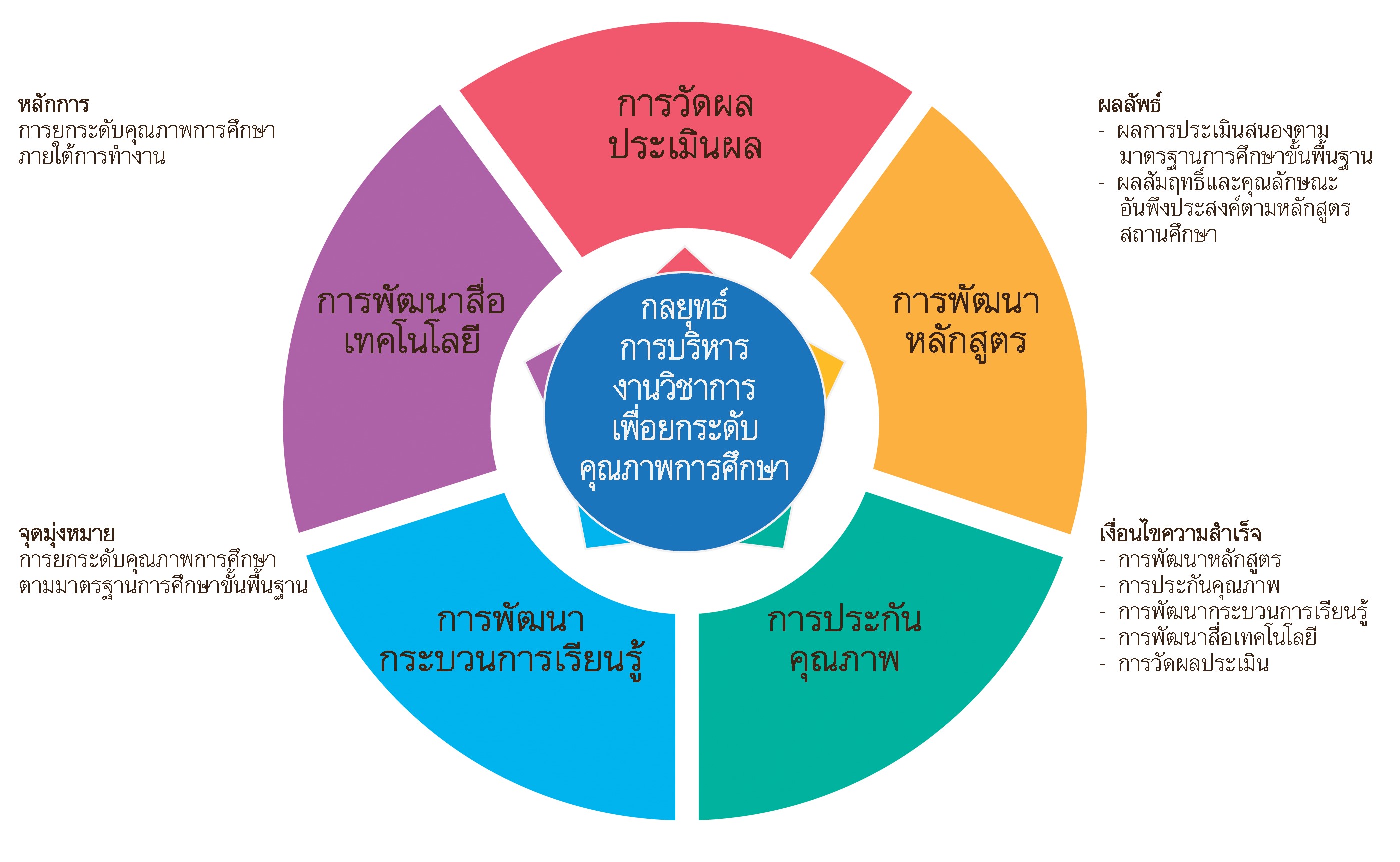Academic Affairs Administration Strategies for Education Quality Improvement of Phrapariyattidhamma School, General Education Division, under National Office of Buddhism Group 10
Main Article Content
Abstract
The purposes of this research were 1) to study the current and desirable conditions, and priority need for academic affairs administration to improve the quality of education; 2) to develop academic affairs administration strategies to improve the quality of education, and 3) to assess academic administration strategies to improve the quality of education. The sample population used in the research consisted of 160 of administrators and teachers. The tool used was a 5-point rating scaled questionnaire with content validity between 0.80-1.00 with a confidence value of .98. Statistics used to analyze the data were frequency, percentage, mean, standard deviation, and the need prioritization (PNI modified).
The results revealed that:
1. The current conditions of academic affair administration to improve the quality of education, overall was moderate. The aspect with the highest average value was teaching and learning management in educational institutions, followed by curriculum development of educational institutions, while the aspect with the lowest mean was evaluation. The desirable condition, overall, was at a high level. The aspect with the highest average was teaching and learning management in educational institutions, followed by development of the curriculum of educational institutes. The aspect with the lowest average was development and use of technological media for education, the first priority evaluation, followed by curriculum development of educational institutions, educational quality assurance.
2. Strategies academic affairs administration to enhance the quality of education included: Strategy 1: Evaluation, 2: Educational Institutions Curriculum Development, 3: Educational Quality Assurance.
3. For suitability assessment, possibility was at a high level in every strategy which can be used to improve the quality of academic work effectively.
Article Details

This work is licensed under a Creative Commons Attribution-NonCommercial-NoDerivatives 4.0 International License.
เพื่อให้เป็นไปตามกฎหมายลิขสิทธิ์ ผู้นิพนธ์ทุกท่านต้องลงลายมือชื่อในแบบฟอร์มใบมอบลิขสิทธิ์บทความ ให้แก่วารสารฯ พร้อมกับบทความต้นฉบับที่ได้แก้ไขครั้งสุดท้าย นอกจากนี้ ผู้นิพนธ์ทุกท่านต้องยืนยันว่าบทความ ต้นฉบับที่ส่งมาตีพิมพ์นั้น ได้ส่งมาตีพิมพ์เฉพาะในวารสาร วิชาการธรรม ทรรศน์ เพียงแห่งเดียวเท่านั้น หากมีการใช้ ภาพหรือตารางของผู้นิพนธ์อื่นที่ปรากฏในสิ่งตีพิมพ์อื่นมาแล้ว ผู้นิพนธ์ต้องขออนุญาตเจ้าของลิขสิทธิ์ก่อน พร้อมทั้ง แสดงหนังสือที่ได้รับการยินยอมต่อบรรณาธิการ ก่อนที่บทความจะได้รับการตีพิมพ์References
เชวงศักดิ์ พฤกษเทเวศ. (2553). การพัฒนาตัวบ่งชี้ภาวะผู้นำเชิงกลยุทธ์ของผู้บริหาร สำนักงานเขตพื้นที่การศึกษา. (วิทยานิพนธ์ปรัชญาดุษฎีบัณฑิต). ขอนแก่น: มหาวิทยาลัยขอนแก่น.
พระครูสิริพัฒนนิเทศก์ (นำพล) และธีรภัทร โคตรบรรเทา. (2562). กลยุทธ์การบริหารงานวิชาการตามหลักไตรสิกขาในโรงเรียนพระปริยัติธรรม แผนกสามัญศึกษา กลุ่มที่ 10. วารสารบัณฑิตศึกษามหาจุฬาขอนแก่น, 6(1), 181-193.
พระราชบัญญัติการศึกษาแห่งชาติ พ.ศ. 2562. (2562, 19 สิงหาคม). ราชกิจจานุเบกษา. เล่ม 116 ตอน 74ก, หน้า 1-23.
โรงเรียนพระปริยัติธรรม แผนกสามัญศึกษา กลุ่ม 10. (2565). รายงานประจำปี 2565 โรงเรียนพระปริยัติธรรม แผนกสามัญศึกษากลุ่ม 10. ร้อยเอ็ด: โรงเรียนพระปริยัติธรรม แผนกสามัญศึกษา กลุ่ม 10.
สมบูรณ์ เทพศรัทธา, รัชนิวรรณ อนุตระกูลชัย และสุรชัย อนุตระกูลชัย. (2562). กลยุทธ์การบริหารงานวิชาการที่มีประสิทธิผลของโรงเรียน สังกัดสำนักงานเขตพื้นที่การศึกษาประถมศึกษาบุรีรัมย์ เขต 1. วารสารมหาจุฬานาครทรรศน์, 6(8), 3843-3855.
สำนักงานเลขาธิการสภาการศึกษา. (2560). แผนการศึกษาแห่งชาติ พ.ศ. 2560-2579. กรุงเทพฯ: พริกหวานกราฟฟิค.
Good, C. V. (1973). Dictionary of Education. New York: McGraw Hill.

